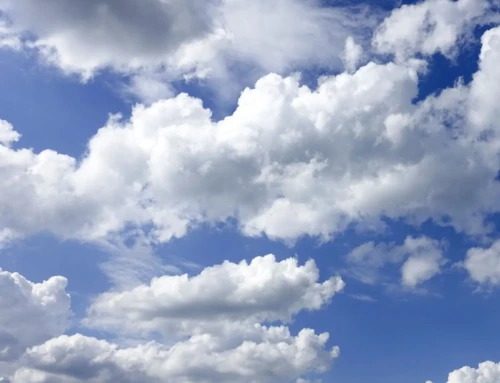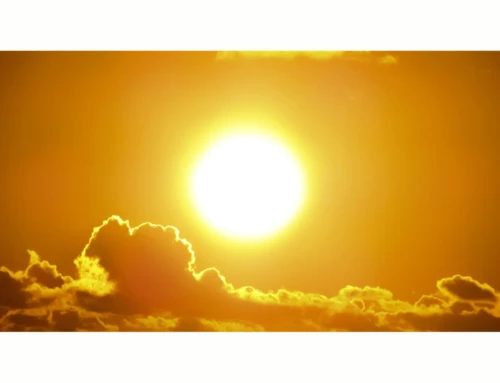Even though we don’t get much snow in Crondall (our local records and history are here), we nevertheless get asked lots of snow related questions, so we’ve tried to pull together answers to the most common ones.
Enjoy.
Snow forms when tiny ice crystals in clouds stick together to become snowflakes. If enough crystals stick together, they’ll become heavy enough to fall to the ground.
The ice crystals that make up snowflakes are symmetrical (or patterned) because they reflect the internal order of the crystal’s water molecules as they arrange themselves in predetermined spaces (known as “crystallization”) to form a six-sided snowflake.
Ultimately, it is the temperature at which a crystal forms — and to a lesser extent the humidity of the air — that determines the basic shape of the ice crystal.
Thus, we see long needle-like crystals at -5C (23 degrees F) and very flat plate-like crystals at -15C (5 degrees F)
The intricate shape of a single arm of the snowflake is determined by the atmospheric conditions experienced by entire ice crystal as it falls.
A crystal might begin to grow arms in one manner, and then minutes or even seconds later, slight changes in the surrounding temperature or humidity causes the crystal to grow in another way.
Although the six-sided shape is always maintained, the ice crystal (and its six arms) may branch off in new directions.
Snowflakes are agglomerates of many snow crystals.
Most snowflakes are less than one-half inch across (1.3cm)
Under certain conditions, usually requiring near-freezing temperatures, light winds, and unstable, convective atmospheric conditions, much larger and irregular flakes close to two inches (5cm) across in the longest dimension can form.
Actually snow isn’t white – it’s actually clear
Visible sunlight is white. Most natural materials absorb some sunlight which gives them their colour.
However snowflakes are made out ice crystals
And therefore snow reflects most of the sunlight.
What little sunlight is absorbed by snow is absorbed uniformly over the wavelengths of visible light thus giving snow its white appearance.
No, it can snow even at very cold temperatures as long as there is some source of moisture and some way to lift or cool the air.
However most heavy snowfalls occur with air temperatures near the ground typically -9C and warmer, as warmer air can hold more water vapour.
Snow forms when the atmospheric temperature is at or below freezing (0C or 32F) and there is a minimum amount of moisture in the air.
If the ground temperature is at or below freezing then snow will reach the ground.
However, the snow can still reach the ground when the ground temperature is above freezing if the conditions are just right.
In this case, snowflakes will begin to melt and the melting creates evaporative cooling which cools the air immediately around the snow flake.
This in turn slows down the speed of melting.
Generally though snow will not form if the ground temperature is not below 5C
Snow forms in the atmosphere, not at the surface.
So snow can fall when surface temperatures are above freezing as long as atmospheric temperatures are below freezing and the air contains a minimum moisture level (the exact level varies according to temperature).
The water content of snow can vary quite a bit.
In general snow that falls at temperatures close to 0C or snow with strong winds do contain about 1 inch (2.5cm) of water per ten inches (25 cm) of snowfall.
However ten inches of fresh snow can contain as little as 0.10 inches (ie a tenth less than the average) of water and as much as 4 inches of water (ie 4 times as much as the average), depending on crystal structure, wind speed, temperature, and other factors.
Fresh, undisturbed snow is composed of a high percentage of air trapped among the lattice structure of the accumulated snow crystals.
Since the air can barely move, heat transfer is greatly reduced.
Fresh, uncompacted snow typically is 90-95 percent trapped air.
Icicles form as the result of cycles of melting and freezing.
Typically this cycle will occur more often on the south sides of buildings, melting in the day and freezing at night, whereas on the north sides, without the benefit of the warmth of the sun, melting does not occur as often.
Thunder and lightning can be associated with snowstorms but they are rare and occur more often near the coast.
Thundersnow starts out like a summer thunderstorm.
The sun heats the ground and pushes masses of warm, moist air upward, creating unstable air columns.
As it rises, the moisture condenses to form clouds, which are jostled by internal turbulence.
The “tricky part” for making thundersnow is creating that atmospheric instability in the wintertime.
For thundersnow to occur, the air layer closer to the ground has to be warmer than the layers above, but still cold enough to create snow—a very precise circumstance.
A layer of snow is made up of ice grains with air in between the ice grains.
Because the snow layer is mostly empty air space, when you step on a layer of snow you compress that layer a little or a lot, depending on how old the snow is.
As the snow compresses, the ice grains rub against each other.
This creates friction or resistance; the colder the temperature, the greater the friction between the grains of ice.
The sudden squashing of the snow at lower temperatures produces the familiar creaking or crunching sound.
At warmer temperatures, closer to melting, this friction is reduced to the point where the sliding of the grains against each other produces little or no noise.
It’s difficult to say at what temperature the snow starts to crunch, but the colder the snow, the louder the crunch.
No, this is just a myth!
Back in 1988 a scientist was examining snowflakes that cam from a big storm in Wisconsin and did indeed find two identical snowflakes.
Almost incredibly, about an hour!
Although it depends on each snowflake’s size and mass and the surrounding environmental conditions, most flakes fall at speeds of 1 to 4 mph
The largest, heaviest snowflakes can reach speeds up to 9 mph, but the typical flake descends toward the ground at about 1.5 mph and takes around an hour to reach the ground, according to the Met Office
Although the term is often used, the official definition is when you can’t see for 400metres.
Also there must be a windspeed of over 35mph.
And the storm must last at least 3 hours.
If any of these conditions are less, it is only a snowstorm.
If you enjoyed reading this, the please explore our other articles below:



